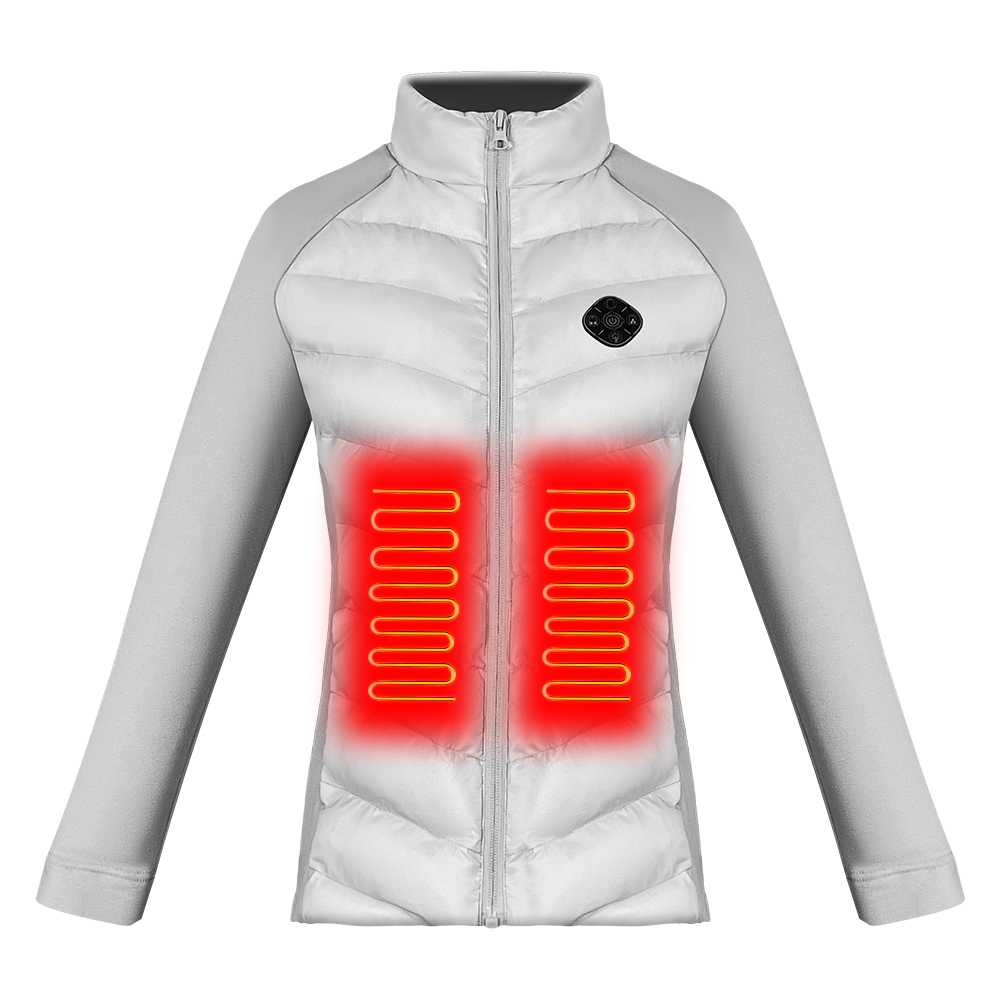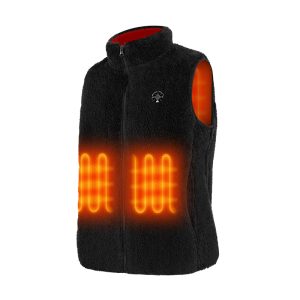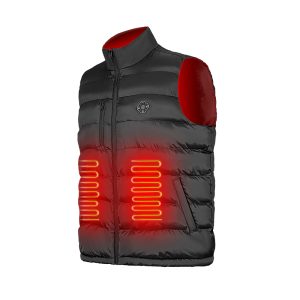Heated jackets provide instant warmth and convenience for cold-weather activities. However, they are not without drawbacks. From cost to technical limitations, here’s a deep dive into the disadvantages—and how NRheat, a CE‑certified OEM/ODM manufacturer, addresses some of them.

1. High Initial Cost
Table of Contents
ToggleHeated jackets are significantly more expensive than traditional outerwear due to the added heating elements, batteries, and control systems.
- Multiple sources note the higher price tag compared to insulated jackets .
- Replacement batteries and chargers further increase lifetime costs .
NRheat mitigates this by offering custom OEM/ODM production, allowing brands to scale and reduce per-unit costs—while still delivering CE‑certified quality and performance.
2. Battery Dependency & Limited Runtime
A heated jacket only works while powered.
- Batteries can deplete within just a few hours—especially at high settings .
- Users may need spare batteries on multi-day outings .
NRheat addresses this with robust battery systems offering up to 12 hours runtime on low settings, and supports dual-battery setups and quick charging. OEM clients can customize battery specs to fit real-world usage.
3. Maintenance & Washing Care
Heated jackets require careful handling: batteries must be removed, wiring must be secured, and apparel washed on gentle cycles .
NRheat engineering ensures wiring is neatly integrated and durable, and every product comes with clear cleaning instructions to preserve heating components.
4. Uneven Heat Distribution
Many heated jackets only cover limited zones (chest, upper back), which can leave other areas cold. Poor placement or uneven heat output is a common complaint .
- Reddit users report heat pockets where wires press uncomfortably under gear .
NRheat uses carbon‑fiber heating panels across multiple zones (front, back, collar), and offers OEM customization for heat layout based on intended use—workwear, camo, active sports.
5. Bulk & Weight
Added batteries and heating elements increase bulk and restrict mobility—especially for hiking or technical use .
NRheat focuses on lightweight, ergonomic design: batteries are slim, jackets use flexible panels, and styles can be streamlined for different activities.
6. Safety & Overheating Risks
Though rare, risks include skin irritation, overheating, electrical faults, or even electric shock .
- Manufacturers implement auto shut-off and temperature regulation, but care must still be taken.
NRheat assures full CE and FCC certification, and incorporates safety features like thermal cut-offs, sealed heating circuits, and compliance checks—especially critical for OEM heat apparel.
7. Limited Fashion or Styling Variety
Heated jackets often prioritize function over form, leading to fewer style options; customization and fashion-forward designs remain limited.
With NRheat’s OEM/ODM model, brands can create camo prints, workwear cuts, urban styles, and full branding customization—combining warmth with market differentiation.

Summary & Mitigation Table
| Disadvantage | Impact | NRheat Solution |
|---|---|---|
| High Cost | Price-sensitive consumer hesitation | OEM scale reduces cost; high-quality CE systems |
| Battery Dependency | Limited runtime outdoors | 12-hour runtime; dual battery options |
| Care & Maintenance | Laundry hassle, damaged wiring risk | Durable wiring + clear care instructions |
| Uneven Heat | Cold spots or discomfort | Multi-zone CARBON‑FIBER heating panels |
| Bulk & Weight | Mobility limitations | Slim battery + ergonomic design |
| Safety Risks | Overheating or electrical hazards | CE/FCC-certified, thermal cut-off, sealed wiring |
| Limited Fashion Variety | Less appealing for mainstream consumers | Full OEM style and branding customization |
The Bottom Line
Heated jackets are not perfect—they come with higher price tags, maintenance requirements, and design compromises. But NRheat stands out as a manufacturer aiming to overcome these disadvantages:
- Custom heat zones and extended battery life tailored to user needs
- Safe, certified components to minimize risks
- OEM/ODM flexibility for brands to innovate in style and functionality
For brands or retailers: partnering with NRheat means getting heated apparel that is technically robust, fashion-conscious, safe, and cost-efficient.
Tips for Buyers
- Budget: Be ready to invest more upfront; expect long-term savings in comfort and utility.
- Carry Backup Power: Spare batteries are essential for long days outdoors.
- Follow Care Instructions: Always remove batteries and handle with care.
- Check Certifications: Look for CE/FCC labels for risk protection.
- Choose Fit & Heat Zones Thoughtfully: Align jacket design with activity (e.g. skiing vs. hiking).
Learn More from NRheat
Discover how NRheat.com combines advanced heating technology, rigorous safety compliance, and full OEM/ODM support to deliver premium heated apparel tailored to both B2B and consumer needs. Consider their solutions for custom heated jackets with reliable runtime, warmth, and design flexibility.
By understanding both the downsides of heated jackets and how the right manufacturer can mitigate these issues, you’ll be better equipped to choose—or design—the perfect heated outerwear for your needs.







